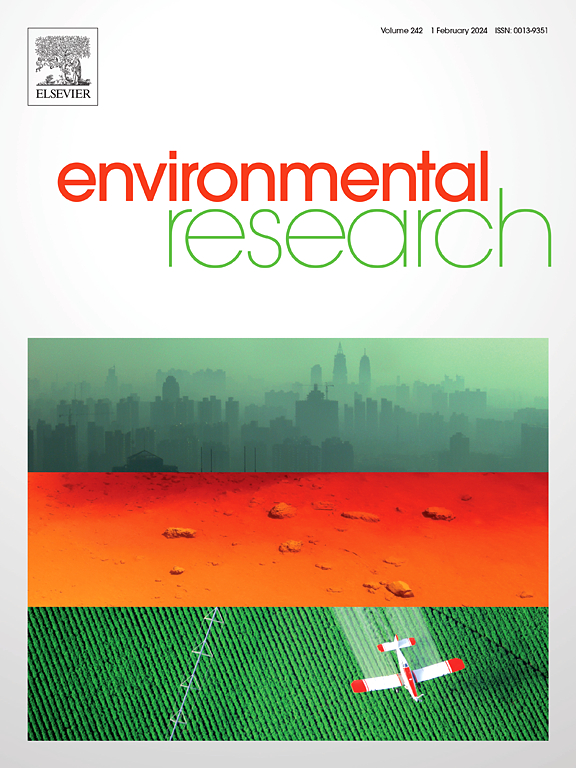Engineering an Escherichia coli with performance-enhanced switch utilizing CRISPR-Cas9 system as living quorum quencher for biofilm formation inhibition
IF 7.7
2区 环境科学与生态学
Q1 ENVIRONMENTAL SCIENCES
引用次数: 0
Abstract
Quorum quenching (QQ) of signal molecules plays a critical role in disrupting bacterial communication, thereby suppressing biofilm formation. However, the wild-type QQ bacteria lacks the regulatory capacity to modulate gene expression levels. In this study, the QQ gene aiiO and reporter gene GFP were chromosomally integrated into Escherichia coli BW25113 using the clustered regularly interspaced short palindromic repeats-CRISPR associated protein 9 (CRISPR-Cas9) system. The performance-enhanced switch in the engineering bacteria (EB) allowed it to express aiiO weakly without the inducer isopropyl-beta-D-thiogalactopyranoside (IPTG) and express aiiO strongly with IPTG, and 1.00 mM IPTG induction enhanced EB's QQ activity by 2.34-fold. In activated sludge systems, the inoculation of EB reduced biofilm formation by 18.56 % versus controls after 168 h, with the performance-enhanced switch enhancing inhibition to 24.72 %. EB reduced biofilm thickness by 22.96 %, total microbial biomass by 57.68 %, and significantly decreased extracellular polymeric substances secretion and adhesion strength of the biofilm (maximum reductions: 29.88 % and 34.31 %, respectively) across all sampling points versus controls. 1.00 mM IPTG addition sustainedly intensified these biofilm-inhibitory effects by EB, demonstrating the genetic switch's persistent functionality under environmentally relevant conditions. Furthermore, the genetically modified strain exhibited minimal environmental impact according to standardized assessments. Therefore, this study successfully constructed an implementable strategy for engineering bacteria-mediated biofilm control, with demonstrated applicability in complex environmental systems.

利用CRISPR-Cas9系统作为抑制生物膜形成的活群体淬灭剂,设计一种具有性能增强开关的大肠杆菌。
信号分子的群体猝灭(QQ)在破坏细菌通讯从而抑制生物膜形成中起着关键作用。然而,野生型QQ细菌缺乏调节基因表达水平的调节能力。本研究利用聚集规则间隔短回文重复序列- crispr相关蛋白9 (CRISPR-Cas9)系统,将QQ基因aiiO和报告基因GFP染色体整合到大肠杆菌BW25113中。工程菌(EB)的性能增强开关使其在没有诱导物异丙基- β - d -硫代半乳糖苷(IPTG)的情况下弱表达aiiO,而在诱导物异丙基- β - d -硫代半乳糖苷(IPTG)的情况下强表达aiiO, 1.00 mM IPTG诱导使EB的QQ活性提高了2.34倍。在活性污泥系统中,接种EB在168 h后使生物膜的形成比对照降低了18.56%,其中性能增强开关使抑制率提高到24.72%。与对照组相比,EB使生物膜厚度减少了22.96%,总微生物量减少了57.68%,并显著降低了细胞外聚合物物质的分泌和生物膜的粘附强度(最大降幅分别为29.88%和34.31%)。1.00 mM IPTG的加入持续增强了EB对生物膜的抑制作用,证明了遗传开关在环境相关条件下的持续功能。此外,根据标准化评估,转基因菌株对环境的影响最小。因此,本研究成功构建了一种可实施的工程细菌介导的生物膜控制策略,并证明了其在复杂环境系统中的适用性。
本文章由计算机程序翻译,如有差异,请以英文原文为准。
求助全文
约1分钟内获得全文
求助全文
来源期刊

Environmental Research
环境科学-公共卫生、环境卫生与职业卫生
CiteScore
12.60
自引率
8.40%
发文量
2480
审稿时长
4.7 months
期刊介绍:
The Environmental Research journal presents a broad range of interdisciplinary research, focused on addressing worldwide environmental concerns and featuring innovative findings. Our publication strives to explore relevant anthropogenic issues across various environmental sectors, showcasing practical applications in real-life settings.
 求助内容:
求助内容: 应助结果提醒方式:
应助结果提醒方式:


